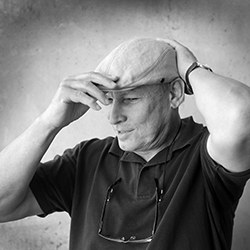
Prague should have its own building regulations, says architect Pleskot
Prague - The capital city of Prague should continue to have its own building regulations in the future. The amendment to the building law, which is set to take effect next year, does not account for its own regulations for the capital. In an interview with ČTK, architect Josef Pleskot, who won the Architect of the Year award in 2014, stated this. He also considers it a significant problem that no major cultural building has been constructed in Prague since 1989. He cited areas such as the lower part of Holešovice and Karlín as examples of neighborhoods that are improving. Conversely, he perceives the city center, which is most visited by tourists, differently.
"Prague undoubtedly needs its own building regulations. A million-person city is a very complex apparatus. The density and compactness of the buildings require different perspectives. There is a metro here, and there are completely different possibilities for parking," said Pleskot.
Building regulations serve as implementing regulations for the building law. Its amendment has been presented by the Ministry of Regional Development at a government meeting. Prague has had its own building regulations as the only city in the country for over 100 years, but they are not mentioned in the amendment to the building law. Prague's building regulations primarily aim to prevent disproportionate loosening of construction or prolonging transport routes. They set rules for the distance of buildings from property boundaries, establish height limits, and more. They also deal in detail with streetscape tree rows and advertising regulation.
Pleskot considers it troubling that since 1989, apart from the National Technical Library, no major cultural building has been established in Prague. "For a long time, we thought, and maybe still think, that we have everything here. The Rudolfinum, the Trade Fair Palace, the Clementinum. But you can't get large orchestras into the Rudolfinum. And Prague has also never hosted a major world exhibition. It may be held in Vienna, but there is no place for it here," added Pleskot.
Among his most well-known completed projects are the revitalization of the industrial area of Vítkovice Ironworks, the design of the Science and Technology Center in Ostrava, the headquarters building of ČSOB in Prague - Radlice, and the General Consulate of the Czech Republic in Munich. Currently, he and his architectural office AP Atelier are working on a residential complex project in Kavčí hory for Central Group.
As examples of Prague neighborhoods that have improved since 1989, he mentioned the lower part of Holešovice and Karlín. "However, in the case of lower Holešovice, this is definitely not the result of enlightened actions by the city council of Prague 7. It is due to the constellation of private owners coming together here. There is the modern DOX gallery, the La Fabrika theater. On Komunardů Street, there are plenty of restaurants you can visit," Pleskot further stated. "In Karlín, it was again the Belgian developer Serge Borenstein. He looked around and saw where to capitalize. The floods of 2002 helped him a bit, but he had already started the project before the floods," the architect added.
In contrast, he described the center, which is most visited by tourists, as a shame for the city. "The center of the city doesn't shine much. The shops are filled with junk, and various matryoshka vendors thrive here. What luxury street is there? Of course, if someone wants to spend a lot of money, they know where to go. They go to Pařížská. But I don't see this as the most important aspect. The important thing is the cultural transformation," said Pleskot. According to him, Wenceslas Square is in very poor condition.
"Of course, it's not the center of the world, nor the center of Prague. But even it clearly shows that we are not at such a high cultural level as we often think. Just look at the shop windows. It is very pathetic," concluded Pleskot.






